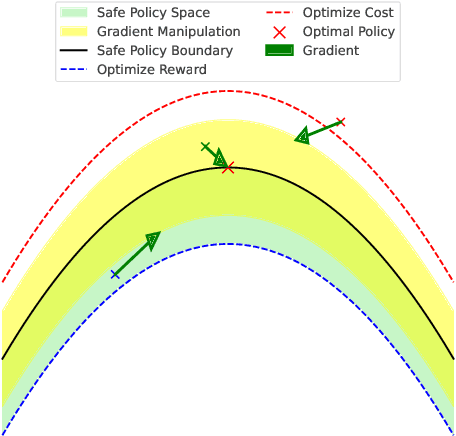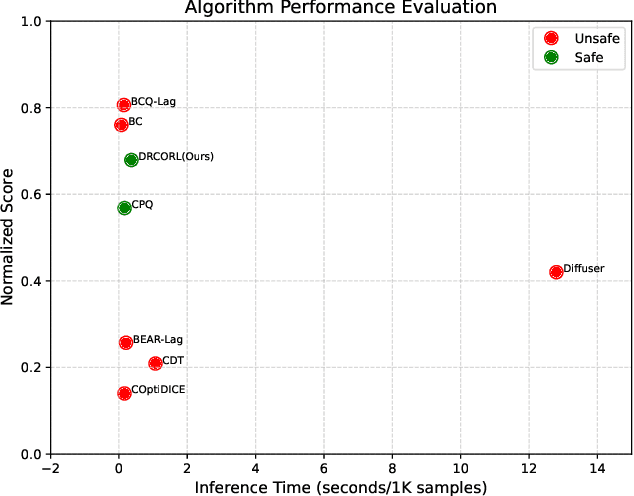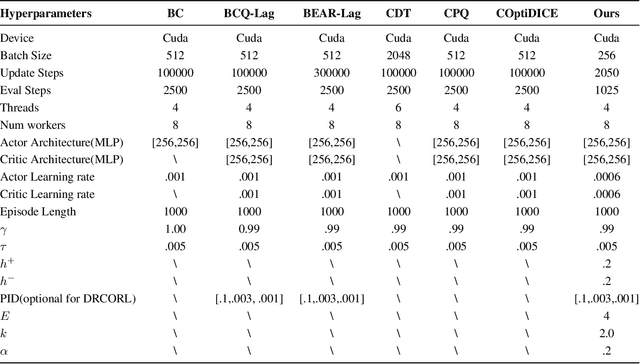Ming Jin
David
AccidentBench: Benchmarking Multimodal Understanding and Reasoning in Vehicle Accidents and Beyond
Sep 30, 2025Abstract:Rapid advances in multimodal models demand benchmarks that rigorously evaluate understanding and reasoning in safety-critical, dynamic real-world settings. We present AccidentBench, a large-scale benchmark that combines vehicle accident scenarios with Beyond domains, safety-critical settings in air and water that emphasize spatial and temporal reasoning (e.g., navigation, orientation, multi-vehicle motion). The benchmark contains approximately 2000 videos and over 19000 human-annotated question--answer pairs spanning multiple video lengths (short/medium/long) and difficulty levels (easy/medium/hard). Tasks systematically probe core capabilities: temporal, spatial, and intent understanding and reasoning. By unifying accident-centric traffic scenes with broader safety-critical scenarios in air and water, AccidentBench offers a comprehensive, physically grounded testbed for evaluating models under real-world variability. Evaluations of state-of-the-art models (e.g., Gemini-2.5 Pro and GPT-5) show that even the strongest models achieve only about 18% accuracy on the hardest tasks and longest videos, revealing substantial gaps in real-world temporal, spatial, and intent reasoning. AccidentBench is designed to expose these critical gaps and drive the development of multimodal models that are safer, more robust, and better aligned with real-world safety-critical challenges. The code and dataset are available at: https://github.com/SafeRL-Lab/AccidentBench
OASIS: Harnessing Diffusion Adversarial Network for Ocean Salinity Imputation using Sparse Drifter Trajectories
Aug 29, 2025Abstract:Ocean salinity plays a vital role in circulation, climate, and marine ecosystems, yet its measurement is often sparse, irregular, and noisy, especially in drifter-based datasets. Traditional approaches, such as remote sensing and optimal interpolation, rely on linearity and stationarity, and are limited by cloud cover, sensor drift, and low satellite revisit rates. While machine learning models offer flexibility, they often fail under severe sparsity and lack principled ways to incorporate physical covariates without specialized sensors. In this paper, we introduce the OceAn Salinity Imputation System (OASIS), a novel diffusion adversarial framework designed to address these challenges.
From Entanglement to Alignment: Representation Space Decomposition for Unsupervised Time Series Domain Adaptation
Jul 28, 2025Abstract:Domain shift poses a fundamental challenge in time series analysis, where models trained on source domain often fail dramatically when applied in target domain with different yet similar distributions. While current unsupervised domain adaptation (UDA) methods attempt to align cross-domain feature distributions, they typically treat features as indivisible entities, ignoring their intrinsic compositions that governs domain adaptation. We introduce DARSD, a novel UDA framework with theoretical explainability that explicitly realizes UDA tasks from the perspective of representation space decomposition. Our core insight is that effective domain adaptation requires not just alignment, but principled disentanglement of transferable knowledge from mixed representations. DARSD consists three synergistic components: (I) An adversarial learnable common invariant basis that projects original features into a domain-invariant subspace while preserving semantic content; (II) A prototypical pseudo-labeling mechanism that dynamically separates target features based on confidence, hindering error accumulation; (III) A hybrid contrastive optimization strategy that simultaneously enforces feature clustering and consistency while mitigating emerging distribution gaps. Comprehensive experiments conducted on four benchmark datasets (WISDM, HAR, HHAR, and MFD) demonstrate DARSD's superiority against 12 UDA algorithms, achieving optimal performance in 35 out of 53 cross-domain scenarios.
Few-Shot Test-Time Optimization Without Retraining for Semiconductor Recipe Generation and Beyond
May 21, 2025Abstract:We introduce Model Feedback Learning (MFL), a novel test-time optimization framework for optimizing inputs to pre-trained AI models or deployed hardware systems without requiring any retraining of the models or modifications to the hardware. In contrast to existing methods that rely on adjusting model parameters, MFL leverages a lightweight reverse model to iteratively search for optimal inputs, enabling efficient adaptation to new objectives under deployment constraints. This framework is particularly advantageous in real-world settings, such as semiconductor manufacturing recipe generation, where modifying deployed systems is often infeasible or cost-prohibitive. We validate MFL on semiconductor plasma etching tasks, where it achieves target recipe generation in just five iterations, significantly outperforming both Bayesian optimization and human experts. Beyond semiconductor applications, MFL also demonstrates strong performance in chemical processes (e.g., chemical vapor deposition) and electronic systems (e.g., wire bonding), highlighting its broad applicability. Additionally, MFL incorporates stability-aware optimization, enhancing robustness to process variations and surpassing conventional supervised learning and random search methods in high-dimensional control settings. By enabling few-shot adaptation, MFL provides a scalable and efficient paradigm for deploying intelligent control in real-world environments.
T2S: High-resolution Time Series Generation with Text-to-Series Diffusion Models
May 05, 2025Abstract:Text-to-Time Series generation holds significant potential to address challenges such as data sparsity, imbalance, and limited availability of multimodal time series datasets across domains. While diffusion models have achieved remarkable success in Text-to-X (e.g., vision and audio data) generation, their use in time series generation remains in its nascent stages. Existing approaches face two critical limitations: (1) the lack of systematic exploration of general-proposed time series captions, which are often domain-specific and struggle with generalization; and (2) the inability to generate time series of arbitrary lengths, limiting their applicability to real-world scenarios. In this work, we first categorize time series captions into three levels: point-level, fragment-level, and instance-level. Additionally, we introduce a new fragment-level dataset containing over 600,000 high-resolution time series-text pairs. Second, we propose Text-to-Series (T2S), a diffusion-based framework that bridges the gap between natural language and time series in a domain-agnostic manner. T2S employs a length-adaptive variational autoencoder to encode time series of varying lengths into consistent latent embeddings. On top of that, T2S effectively aligns textual representations with latent embeddings by utilizing Flow Matching and employing Diffusion Transformer as the denoiser. We train T2S in an interleaved paradigm across multiple lengths, allowing it to generate sequences of any desired length. Extensive evaluations demonstrate that T2S achieves state-of-the-art performance across 13 datasets spanning 12 domains.
Backtracking for Safety
Mar 11, 2025Abstract:Large language models (LLMs) have demonstrated remarkable capabilities across various tasks, but ensuring their safety and alignment with human values remains crucial. Current safety alignment methods, such as supervised fine-tuning and reinforcement learning-based approaches, can exhibit vulnerabilities to adversarial attacks and often result in shallow safety alignment, primarily focusing on preventing harmful content in the initial tokens of the generated output. While methods like resetting can help recover from unsafe generations by discarding previous tokens and restarting the generation process, they are not well-suited for addressing nuanced safety violations like toxicity that may arise within otherwise benign and lengthy generations. In this paper, we propose a novel backtracking method designed to address these limitations. Our method allows the model to revert to a safer generation state, not necessarily at the beginning, when safety violations occur during generation. This approach enables targeted correction of problematic segments without discarding the entire generated text, thereby preserving efficiency. We demonstrate that our method dramatically reduces toxicity appearing through the generation process with minimal impact to efficiency.
Robust Gymnasium: A Unified Modular Benchmark for Robust Reinforcement Learning
Feb 27, 2025



Abstract:Driven by inherent uncertainty and the sim-to-real gap, robust reinforcement learning (RL) seeks to improve resilience against the complexity and variability in agent-environment sequential interactions. Despite the existence of a large number of RL benchmarks, there is a lack of standardized benchmarks for robust RL. Current robust RL policies often focus on a specific type of uncertainty and are evaluated in distinct, one-off environments. In this work, we introduce Robust-Gymnasium, a unified modular benchmark designed for robust RL that supports a wide variety of disruptions across all key RL components-agents' observed state and reward, agents' actions, and the environment. Offering over sixty diverse task environments spanning control and robotics, safe RL, and multi-agent RL, it provides an open-source and user-friendly tool for the community to assess current methods and foster the development of robust RL algorithms. In addition, we benchmark existing standard and robust RL algorithms within this framework, uncovering significant deficiencies in each and offering new insights.
TimeDistill: Efficient Long-Term Time Series Forecasting with MLP via Cross-Architecture Distillation
Feb 20, 2025Abstract:Transformer-based and CNN-based methods demonstrate strong performance in long-term time series forecasting. However, their high computational and storage requirements can hinder large-scale deployment. To address this limitation, we propose integrating lightweight MLP with advanced architectures using knowledge distillation (KD). Our preliminary study reveals different models can capture complementary patterns, particularly multi-scale and multi-period patterns in the temporal and frequency domains. Based on this observation, we introduce TimeDistill, a cross-architecture KD framework that transfers these patterns from teacher models (e.g., Transformers, CNNs) to MLP. Additionally, we provide a theoretical analysis, demonstrating that our KD approach can be interpreted as a specialized form of mixup data augmentation. TimeDistill improves MLP performance by up to 18.6%, surpassing teacher models on eight datasets. It also achieves up to 7X faster inference and requires 130X fewer parameters. Furthermore, we conduct extensive evaluations to highlight the versatility and effectiveness of TimeDistill.
Reward-Safety Balance in Offline Safe RL via Diffusion Regularization
Feb 18, 2025



Abstract:Constrained reinforcement learning (RL) seeks high-performance policies under safety constraints. We focus on an offline setting where the agent has only a fixed dataset -- common in realistic tasks to prevent unsafe exploration. To address this, we propose Diffusion-Regularized Constrained Offline Reinforcement Learning (DRCORL), which first uses a diffusion model to capture the behavioral policy from offline data and then extracts a simplified policy to enable efficient inference. We further apply gradient manipulation for safety adaptation, balancing the reward objective and constraint satisfaction. This approach leverages high-quality offline data while incorporating safety requirements. Empirical results show that DRCORL achieves reliable safety performance, fast inference, and strong reward outcomes across robot learning tasks. Compared to existing safe offline RL methods, it consistently meets cost limits and performs well with the same hyperparameters, indicating practical applicability in real-world scenarios.
Time-VLM: Exploring Multimodal Vision-Language Models for Augmented Time Series Forecasting
Feb 06, 2025Abstract:Recent advancements in time series forecasting have explored augmenting models with text or vision modalities to improve accuracy. While text provides contextual understanding, it often lacks fine-grained temporal details. Conversely, vision captures intricate temporal patterns but lacks semantic context, limiting the complementary potential of these modalities. To address this, we propose Time-VLM, a novel multimodal framework that leverages pre-trained Vision-Language Models (VLMs) to bridge temporal, visual, and textual modalities for enhanced forecasting. Our framework comprises three key components: (1) a Retrieval-Augmented Learner, which extracts enriched temporal features through memory bank interactions; (2) a Vision-Augmented Learner, which encodes time series as informative images; and (3) a Text-Augmented Learner, which generates contextual textual descriptions. These components collaborate with frozen pre-trained VLMs to produce multimodal embeddings, which are then fused with temporal features for final prediction. Extensive experiments across diverse datasets demonstrate that Time-VLM achieves superior performance, particularly in few-shot and zero-shot scenarios, thereby establishing a new direction for multimodal time series forecasting.
 Add to Chrome
Add to Chrome Add to Firefox
Add to Firefox Add to Edge
Add to Edge